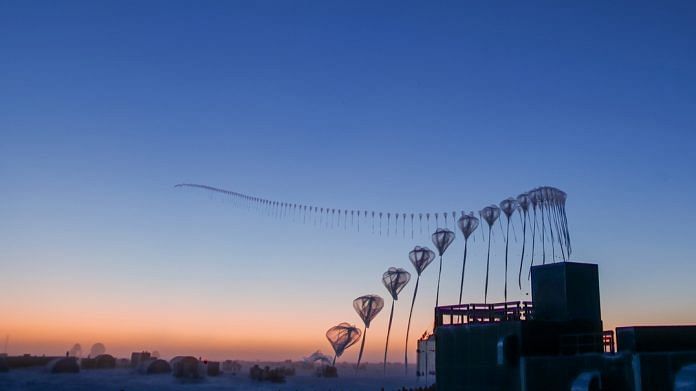New Delhi: The ozone hole this year is the smallest on record since its discovery in 1985, NASA and NOAA scientists have found. They, however, warned that this is not a sign that the atmospheric ozone is suddenly on a fast track to recovery.
According to satellite measurements, the ozone hole reached 16.4 million square kilometres on 8 SeptemberOzone hole shrinks to smallest on record but NASA says it doesn’t mean layer is recovering, the peak extent for the year, but then shrunk to less than 10 million square kilometres, the lowest ever on record, for the remainder of September and October.
The measurements were carried out by NASA and the National Oceanic and Atmospheric Administration (NOAA). They reveal the extent of the damage caused to the ozone layer.
The ozone layer is located in the Earth’s stratosphere — roughly 11 to 40 km above the Earth’s surface — and acts as the planet’s shield against potentially harmful ultraviolet radiation from the sun that can cause skin cancer and damage plants.
“It’s great news for ozone in the Southern Hemisphere,” said Paul Newman, chief scientist for Earth Sciences at NASA’s Goddard Space Flight Center in the US.
“But it’s important to recognise that what we’re seeing this year is due to warmer stratospheric temperatures. It’s not a sign that atmospheric ozone is suddenly on a fast track to recovery,” Newman added in a statement.
During years with normal weather conditions, the ozone hole typically grows to a maximum area of about 20.7 million square miles in late September or early October.
Also read: NASA unveils new spacesuits for astronauts for 2024 Moon mission
The ozone hole
The ozone hole over the Antarctic forms during late winter in the Southern Hemisphere as the returning Sun’s rays start ozone-depleting reactions. These reactions take place at the stratospheric clouds due to chemically active forms of chlorine and bromine derived from man-made compounds.
In most years, at least some levels of the stratosphere, the region of the upper atmosphere where the largest amounts of ozone are normally found, are found to be completely devoid of ozone.
In warmer temperatures, however, fewer polar stratospheric clouds form and these reactions do not persist as long, limiting the ozone-depletion process.
The depletion is measured at the South Pole through weather balloons carrying ozone-measuring “sondes”, probes that directly sample ozone levels vertically through the atmosphere.
“This year, ozonesonde measurements at the South Pole did not show any portions of the atmosphere where ozone was completely depleted,” the statement quoted atmospheric scientist Bryan Johnson at NOAA’s Earth System Research Laboratory in Boulder, Colorado, as having said.
Also read: Turns out organic farming is far worse for climate change than conventional agriculture
A rare phenomenon
This is the third time in the last 40 years that weather systems have caused warm temperatures that limit ozone depletion, the statement quoted Susan Strahan, an atmospheric scientist with the Universities Space Research Association, and who works at NASA, as having said.
Similar weather patterns in the Antarctic stratosphere in September 1988 and 2002 also produced atypically small ozone holes, she added. “It’s a rare event that we’re still trying to understand,” Strahan said.
According to the NASA statement, researchers at the British Antarctic Survey discovered the ozone hole in 1985 and NASA’s satellite estimates not only confirmed the 1985 discovery but also revealed the ozone hole’s continental scale.
In 1987, the international community signed the Montreal Protocol on Substances that Deplete the Ozone Layer. This agreement regulated the consumption and production of ozone-depleting compounds.
Atmospheric levels of man-made ozone-depleting substances increased up to the year 2000. Since then, they have slowly declined but remain high enough to produce significant ozone loss.
The ozone hole over Antarctica is expected to gradually become less severe as chlorofluorocarbons — banned chlorine-containing synthetic compounds that were once frequently used as coolants — continue to decline. Scientists expect the Antarctic ozone to recover back to the 1980 level around 2070.
Also read: NASA’s Curiosity rover finds ancient salt-rich lakes that could’ve supported life on Mars






